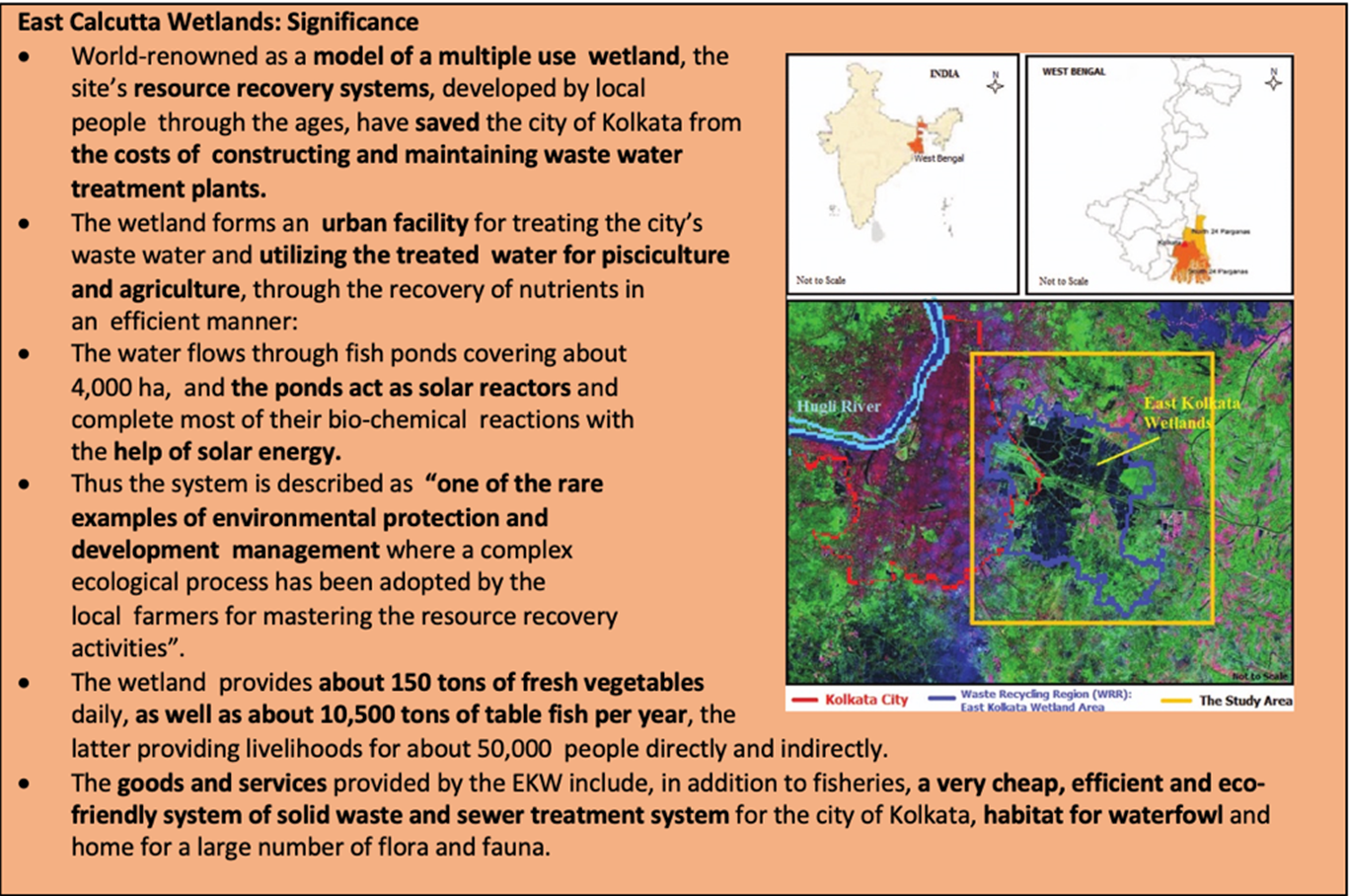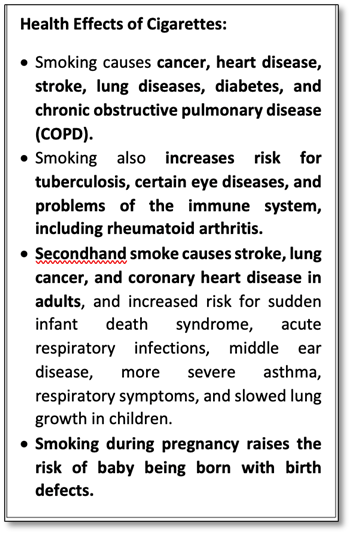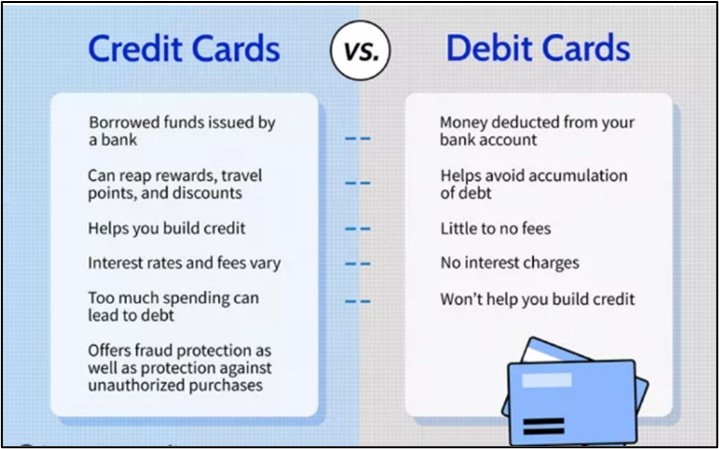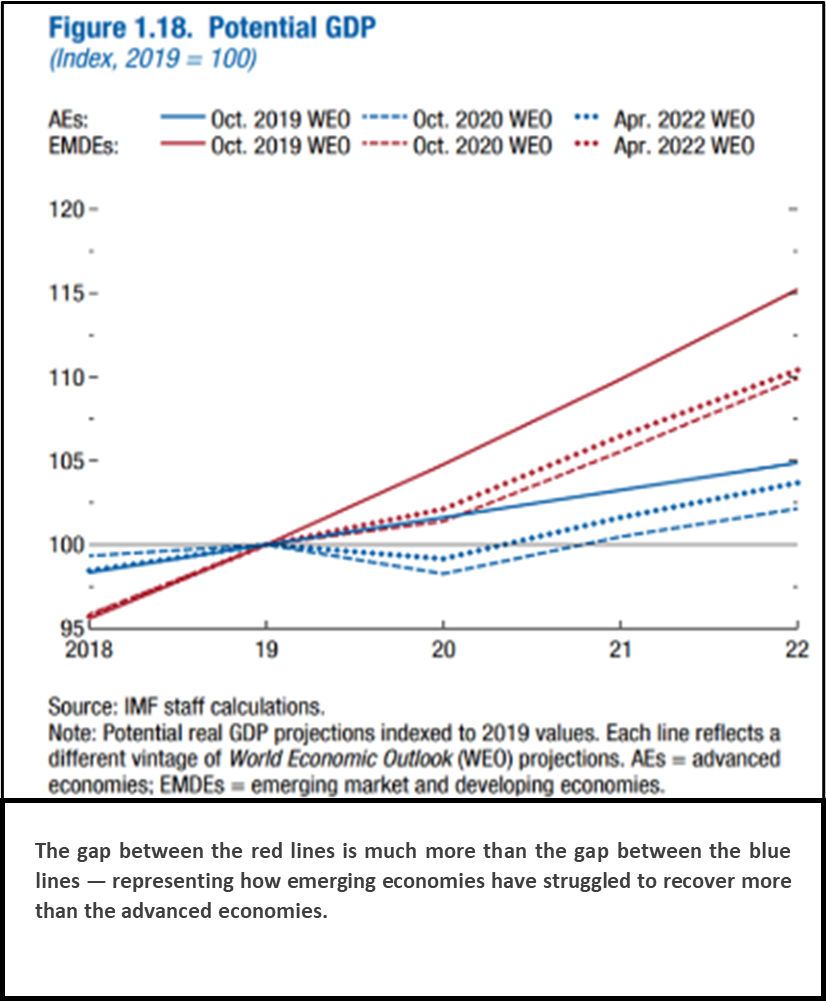Monday, 2nd May 2022
Rules governing IAS resignation
In News
The central government has recently reinstated IAS officer Shah Faesal into Indian Administrative Service (IAS)
About the News
- His resignation was not accepted by the government pending investigation into some of his posts on social media.
- At present, being the minister in charge of the DoPT, the Prime Minister takes decisions currently in respect of the IAS.
What are the rules governing IAS officer service?
Intimation:
- About: It is a formal intimation in writing by an officer of his/her intention or a proposal to leave the IAS, either immediately or at a specified date in the future.
- Statute: The resignation of an officer of any of the three All-India Services — IAS, the Indian Police Service (IPS) and Indian Forest Service — is governed by Rules 5(1) and 5(1)(A) of the All-India Services (Death-cum-Retirement Benefits) Rules, 1958.
- Difference from VRS: In Voluntary Retirement Scheme (VRS), one is entitled to pension, whereas those who resign are not.
- Submission: An officer serving in a cadre (state) must submit his/her resignation to the chief secretary of the state.
- Center: An officer who is on central deputation is required to submit his/her resignation to the secretary of the concerned Ministry or Department. The Ministry/Department then forwards the officer’s resignation to the concerned state cadre, along with its comments or recommendations.
What are the various components of resignation?
- Circumstances for resignation:
- General convention: The general rule follows the circular of DoPT which says that it is not in the interest of the government to retain an officer who is unwilling to serve., and therefore, resignation is in general accepted — except in certain circumstances.
- Rejection: In cases where disciplinary cases were pending against officers, resignations have been rejected and concurrence of the Central Vigilance Commission (CVC) is obtained.
- Bond: The government also checks whether the concerned officer had executed any bond to serve the government for a specified number of years on account of having received specialised training, a fellowship, or scholarship for studies.
- Public interest: If the Government servant concerned is engaged on work of importance and it would take time to make alternative arrangements for filling the post, then the resignation is not accepted straightway but only when alternative arrangements for filling the post is made.
Withdrawal of resignation:
- Permission: According to the amended DCRB Rules, the central government may permit an officer to withdraw his/her resignation “in the public interest”.
- Time frame: The period of absence from duty between the date on which the resignation became effective and the date on which the member is allowed to resume duty as a result of permission to withdraw the resignation is not more than ninety days.
- Politics: Request for withdrawal of resignation is not accepted by the Central Government where a member of the Service resigns from his/her service or post with a view to be associated with any political parties or any organisation which takes part in politics, or to take part in, or subscribe in aid of, or assist in any other manner, any political movement or political activity or to canvass or otherwise interfere with, or use his/her influence in connection with, or take part in, an election to any legislature or local authority.
- Automatic withdrawal: If an officer who has submitted his/her resignation sends an intimation in writing withdrawing it before its acceptance by the competent authority, the resignation will be deemed to have been automatically withdrawn.
Source:
Environmental Violations in Ramsar Sites
In News
A recent audit report of the Comptroller and Auditor General (CAG) has pointed out illegal construction and violations of environmental norms in two Ramsar sites in West Bengal-the East Kolkata Wetlands (EKW) and the Sunderbans.
About the News:
- The Report noted that there have been illegal constructions in the EKW and Coastal Regulation Zone area in Sunderbans.
- However, such violations in these ecologically fragile areas were rarely found to have been penalized except on a couple of rare occasions that too in compliance with Kolkata High Court orders.
- In 2002 the EKW was included in the Ramsar list of ‘Wetlands of International Importance’.
- However, because of increasing pressure of urbanization, change in the quality and quantity of the solid waste and sewer, as also human neglect, this site is under threat from various directions.

Ramsar Sites and Ramsar Convention
- The Ramsar Convention, which came into existence in 1971, is an intergovernmental treaty that provides the framework for national action and international cooperation for the conservation and wise use of wetlands and their resources.
- India’s tally of 49 designated wetlands spread over 10,936 sq km in 18 states and two Union Territories is the largest network of Ramsar Sites in South Asia. The Ramsar Convention on Wetlands designated Khijadia Bird Sanctuary near Jamnagar in Gujarat and Bakhira Wildlife Sanctuary in Uttar Pradesh as wetlands of international importance.
- Of the 49 sites, 10 are in UP, 6 in Punjab, 4 each in Gujarat and Jammu and Kashmir, 3 each in Himachal Pradesh and Kerala, 2 each in Haryana, Maharashtra, Odisha, West Bengal, Rajasthan and one each in Andhra Pradesh, Assam, Bihar, Ladakh, Manipur, Tamil Nadu, Tripura, Uttarakhand and Madhya Pradesh.
- The Ramsar Convention on Wetlands defines wetlands as “areas of marsh, fen, peat land or water, whether natural or artificial, permanent or temporary, with water that is static or flowing, fresh, brackish or salt, including areas of marine water the depth of which at low tide does not exceed six meters.”
- However, the Indian government’s definition of wetland excludes river channels, paddy fields and other areas where commercial activity takes place.
- Globally, wetlands cover 6.4 per cent of the geographical area of the world. In India, according to the National Wetland Inventory and Assessment compiled by the Indian Space Research Organisation (ISRO), wetlands are spread over 1,52,600 square kilometres (sq km) which is 63 per cent of the total geographical area of the country.
Source:
- CAG report highlights gross environmental violations in Ramsar sites, EKW, Sunderbans
- Audit Report of the Comptroller and Auditor General of India (Performance & Compliance Audit) for the year ended 31 March 2020
- Explained: What are Ramsar Sites, and what is the significance of the listing?:
Image source:
Menthol Cigarettes
In News
The US Food and Drug Administration issued a proposal to ban menthol cigarettes and flavoured cigars, a move aimed at not just curbing smoking in the American population, but also “reducing tobacco-related health disparities”.
About the News
- The USA has proposed to ban menthol Cigarettes a move likely to have the deepest impact on Black smokers and young adults.
- In its fact sheet, the FDA said nearly 85% of Black smokers use menthol cigarettes as compared to 30% white smokers, and that modelling studies estimate a 15% overall reduction in smoking over age 40 if menthol cigarettes were unavailable.


Smoking in India:
- India has 7 crore tobacco users aged 15 and above, as per the last available Global Adult Tobacco Survey (GATS 2016-17) — 18% of the population uses smokeless tobacco, 7% smoke, and 4% use both.
- In India, e-cigarettes have been banned since 2019 for preventing potential health risks to India's youth.
- Drug abuse including cannabis and opioids are also on the rise in India, which may be related to smoking in some cases.
Additional measures to be taken for tobacco control:
- Other than banning tobacco products that draw in young new users, experts stressed a need for oversight on social media platforms, content streaming websites, and web based shopping portals.
- These websites not only advertise a tobacco product, which is against the law, they also make misleading claims such as menthol cigarettes being less harmful than regular cigarettes.
- Prevention can take the form of policy-level measures, such as
- increased taxation of tobacco products;
- stricter laws (and enforcement of laws) regulating who can purchase tobacco products;
- how and where they can be purchased;
- where and when they can be used (i.e., smoke-free policies in restaurants, bars, and other public places);
- and restrictions on advertising and mandatory health warnings on packages.
- Prevention can also take place at the school or community level in the form of interventions and counselling for vulnerable groups like teenagers.
- Risk factors for smoking include having family members or peers who smoke, being in a lower socioeconomic status, living in a neighborhood with high density of tobacco outlets, not participating in team sports, being exposed to smoking in movies, and being sensation-seeking.

Sources:
- Explained: Why US wants to ban menthol cigarettes, and what ‘racial justice’ has to do with it
- Explained: How far could a ban on menthol cigarettes help reduce smoking in India?
- Health EffectsTobacco, Nicotine, and E-Cigarettes Research Report How can we prevent tobacco use?
- All you need to know about drugs, substance abuse in India
Satyajit Ray
On May 2, 1912, Satyajit Ray was born in Calcutta. His father, Late Sukumar Ray was an eminent poet and writer in the history of Bengali literature. In 1940, after receiving his degree in science and economics from Calcutta University, he attended Tagore's Viswa-Bharati University. His first movie Pather Panchali (1955) won several International Awards and set Ray as a world-class director. He died on April twenty-third, 1992. He's the second Indian to have won an Oscar. The first was Bhanu Athaiya in 1983.

Sources:
Oil Drilling in Forest Areas
In News
The Forest Advisory Committee (FAC) of the Ministry of Environment, Forest and Climate Change has given ‘in principle’ approval for extended reach drilling (ERD), a form of oil and gas extraction, in forest areas, contingent upon the Wildlife Institute of India’s sanction.
About the News
- The government has proposed that drilling can occur at least 1 km outside a protected area, and half a kilometre away from villages in forest
- Those who want to undertake ERD in forest areas require permission from the ministry under the Forest (Conservation) Act, 1980, which prohibits diversion of forest land for non-forest purposes without clearance from the central government.
- If the FAC is to grant its “final” approval, it could result in exemptions to the clearance process outlined by the Forest (Conservation) Act in its current form.
- However, environmentalists have expressed concern over the ambiguity around the impact of EDR, and say that oil extraction in protected areas still poses serious environmental and health risks.
What is ERD technology?
- About: ERD is a method of extraction that involves digging a horizontal well at an incline that is at least twice as long in its length as it is in depth, which allows for the drilling to take place at a distance from the site of extraction. Thus, it is different from instead of drilling wells vertically.
- Benefits: Using the ERD technology, we can locate and produce oil or natural gas from deposits below the seabed by diagonally drilling horizontal wells from the land, rather than constructing offshore platforms directly above these deposits and drilling vertical wells to reach oil/natural gas.
- Impact: Although the technology pose “no direct impact” on fauna, but that “indirect” impact could include forest fires from oil leakages, soil surface contamination, and reproductive disorders
- Need: It is the best technology for tapping the hydrocarbon from beneath without disturbing the surface

What are the recommended norms for ERD?
- Distance: The minimum linear distance of drilling from the boundary on the ground for protected areas and wildlife corridors should not be less than 1km, and other forest areas recorded as protected forest, reserve forests or village forests should be at least 0.5km away.
- Exemption: ERD projects need not to be considered under the purview of Forest Conservation Act, 1980 since no activity is undertaken directly in the forest area, and there would be minimal impact at the surface level due to activities carried out at a depth of 3,000m-4,000m.

Why is it needed?
- Strategic industry: The oil and gas sector is among the eight core industries in India and plays a major role in influencing decision making for all the other important sections of the economy.
- Fuelling growth story: India's economic growth is closely related to its energy demand, therefore, the need for oil and gas is projected to grow more, thereby making the sector quite conducive for investment. India retained its spot as the third-largest consumer of oil in the world as of 2021.
- Meeting demands: According to IEA (India Energy Outlook 2021), primary energy demand is expected to nearly double to 1,123 million tonnes of oil equivalent, as the country's gross domestic product (GDP) is expected to increase to US$ 8.6 trillion by 2040.
- Surge in Consumption: India is planning to double its refining capacity to 450-500 million tonnes by 2030 as the crude oil consumption is expected to grow at a CAGR of 4.66% to 500 MMTPA by 2040 from 201.26 million tonnes in 2021.
- Import burden: India's oil demand is projected to rise at the fastest pace in the world to reach 10 million barrels per day by 2030, from 4.9 million barrels per day in 2021.
What can be the impacts of Oil drilling in Forests?
- Impact on communities: People living nearby to drilling sites are exposed to pollutants on a daily basis. It can lead to respiratory, cardiovascular and other diseases and is responsible for deaths in people as young as aged 14. Besides, fossil fuel development can also leak toxic substances into the soil and drinking water sources, causing cancer, birth defects and liver damage.
- Fuels climate change: Climate change is happening here and now. Extreme weather events are directly linked to fossil fuels that release heat-trapping gases into the atmosphere.
- Wildlands: Infrastructure built for oil and gas extraction can leave behind radical impacts on wildlands. The construction of roads, facilities and drilling sites requires the use of heavy equipment and can destroy big chunks of pristine wilderness. The damage is often irreversible.
- Turns visitors away: Hunters, anglers, hikers, birders and vacationing families go into the wilderness to experience nature in all its beauty. The unsightly effects of oil and gas can ultimately hurt local communities that depend on tourism for a living.
- Disrupts wildlife habitat: Loud noises, human movement and vehicle traffic from drilling operations can disrupt animals’ communication, breeding and nesting. Powerlines, well pads, fences, and roads can also fragment habitats for many species.
- Light pollution impacts wildlife and wilderness: The glare from oil and gas sites is so strong that it’s visible from space. Much of that light is produced by the burning, or flaring, of natural gas, well pads and storage sites. Scientists have found that the bright glow can hurt pollinators such as bees.
What more can be done?
In line with the Hydrocarbon Vision 2025, a cautious approach is necessary, and concerns about the effects of ERD need to be extended beyond wildlife.
- Livelihood: People living in and around these areas and lands support local economies and any restriction in their access to those areas, especially without any deliberation, could lend itself to conflict.
- Focus on oil security: There is need for intensification of exploration efforts and achievement of 100% coverage of unexplored basins in a time bound manner to enhance domestic availability of oil and gas.
- Securing acreages: Government should identify countries having high attractiveness for ensuring sustainable long-term supplies.
- Opening up markets: Hydrocarbon market needs to be opened so that there is free and fair competition, between public sector enterprises, private companies and other international players.
Conclusion:
The environment ministry’s cautious approach on ERD technology in recorded forests and protected areas is a crucial process. The areas in question are not just sensitive ecologically, hydrologically, but have existing habitation and use rights, which will be affected if land areas are secured for oil extraction. This is particularly important as many oil-bearing states like Assam are in conflict, and companies have sought exemptions from public hearings citing the same. Since the ministry is aware of these tensions, they would need to inform the final decision rather than exclude it implications.
Question: The Extended Reach Drilling (ERD) has recently proposed by the government for oil drilling in Forest areas. Explain ERD and the concerns related to it.
Source:
Fossils of Leaves
This is image of Leaf fossils of a huge dipterocarp leaf on Borneo island. These fossils have revealed that the rainforests that cover the surface of the island have been in place and fostering biodiversity for at least 4 million years. Borneo is home to almost 270 dipterocarp species, which is more than half the total global species. With tropical Asian biodiversity currently under severe threat, the island plays a crucial role in supporting that biodiversity. Now, around 89 percent of the 460 Asian dipterocarp species have Near Threatened status, while 57 percent are labeled as Endangered, Critically Endangered, or Extinct.

Source:
K-100 project
- Context: The work on developing K-100 has been completed around 65%.
- The K-100 project is Karnataka’s ambitious project that envisages to establish the raja kaluve(major storm-water drains) as a waterway and ecological corridor in the city of Bangalore on the lines of the development of Sabarmati River Waterfront project in Gujarat, Pasig river in Manila, and many other water canals running through residential neighbourhoods.
- It is a ₹160-crore ‘Citizens Waterway Project’ launched in 2021.
- Key objectives of the project include:
- Reframing the storm water drains from mere ‘grey infrastructure’ to creating an ecological corridor with active involvement of citizens.
- Reconnecting the city to its water heritage
Using natural processes to act as a remedial tool
-
- Increasing the availability of public spaces in the city for recreation and health
- Addressing the key issues of pollution, air quality, water scarcity and flood mitigation
- Of Bengaluru’s SWD (Storm water drains) network of approximately 850 km, 400 km are rajakaluves or primary stormwater drains, significant of which is the K100, which starts near the erstwhile Dharmabuddhi lake and drains into Bellandur Lake.
- Storm water drains (SWDs) are a crucial part of the city’s lake ecosystem, and hence the entire network must be addressed to solve the city’s water crisis.

Source:
- K-100 project: Sewage flow still a challenge
- Citizens’ Water Way Project: How Bengaluru is revamping the Majestic-Bellandur drain network
Image source:
Anabolic steroids
- Context: Two Tokyo Olympians have been recently banned after the police seized anabolic steroids and supplements worth Rs 2 crore.
- Anabolic steroids are essentially lab-made versions of the male hormone testosterone and have a similar effect of increasing muscle mass as the natural hormone does.
- It also increases male characteristics in a person, such as facial hair and a deeper voice.
- These are different from the steroids that are prescribed by doctors (corticosteroids that are lab-made molecules that mimic the action of the hormone called cortisol) for inflammations, autoimmune diseases, or to suppress the body’s immune system during a Covid infection.
- Unlike corticosteroids, anabolic steroids have limited medical use. They are mainly used by doctors to help patients gain weight after a severe illness or injury, prescribed in small doses to the elderly to build muscle mass, in some cases also helps to treat anaemia.
- However, they are being misused by athletes and sportspersons and bodybuilders.
- Use of anabolic steroids in the short-term can cause acne and hair fall while its extended misuse can also lead to gynaecomastia (growth of breasts in men) and erectile dysfunction.
- In women, it can lead to growth of facial hair. It may also cause extreme anger, paranoia, and impaired judgement.

Source:
Image source:
Nidhi companies - Edukemy Current Affairs
- Context: The Ministry of Corporate Affairs (MCA) has recently tightened the rules for Nidhi Companies.
- Nidhi companies are a type of non-bank lenders that raise funds exclusively from their members and give loans to them at a lower interest than commercial banks to improve their governance and protect public interest.
- They are very popular in South India and play a crucial role in the financial system.
- To become a Nidhi company, the entity has to first register as a public limited company, which has more disclosure requirements than a private limited company.
- Only individual members are allowed in Nidhi companies and it cannot give loans to companies.
- According to the new Rules:
- A public company set up as a Nidhi with share capital of ₹1 million needs to first get itself declared as a Nidhi from the Union government.
- The promoters and directors of the company have to meet the criteria of fit and proper person as laid down in the rules.
- The concept of deemed approval has been introduced to make sure that applications for certification as Nidhi companies are decided upon in time, i.e., if no decision on the application is conveyed to the company within 45 days of filing the application, approval would be deemed as granted.
- Until 2014, only 390 companies were declared as Nidhis, after which more than 10,000 companies were incorporated pf which only about 2,300 companies have applied for declaration as Nidhi companies.

Source:
Image source:
GI Tagged Figs
- Context: For the first time, fresh figs from Purandar taluka of Maharashtra’s Pune district with GI tags have been exported to Europe.
- It has been exported by the Purandar Highlands Farmers Producers Company (PHFPC) to Germany and the export has been facilitated by the Maharashtra State Agriculture Marketing Board (MSAMB).
- In India fig farming is mostly done in Maharashtra, Gujarat, Uttar Pradesh, Karnataka and Tamil Nadu.
- About 90-92% of these figs are produced in Pune district.
- They are a rich source of nutrients, are highly perishable; their quality deteriorates within hours of being plucked.
- The fig season occurs twice a year from May to June and December to January.
- Fig being a deciduous and sub tropical tree, prefers areas having arid or semiarid environment, high summer temperature, plenty of sunshine and moderate water.
- Although the plants can survive temperature as high 45 degree C, the fruit quality deteriorates beyond 39 degree C. The mature tree can withstand low temperature up to 40C, it makes good growth when the temperature is above 15 – 21 degree C.
- The size, shape, colour of the skin and pulp quality are markedly affected by climate. But quality figs are produced in the region with dry climate especially at the time of fruit development and maturity. High humidity coupled with low temperature usually results in fruit splitting and low fruit quality.
- Fig is one of the most salt and drought tolerant crops. It can tolerate a fairly high level of sulphate or chloride salt. Medium to heavy, calcareous, well drained, deep (about 1 m ) soil having pH of 7-8 is ideally suitable cultivation of fig.

Source:
- In a first, Pune’s GI-tagged figs exported to Germany
- In a first, GI-tagged Purandhar figs from Pune exported to Germany
- Fig:
Image source:
Semiconductors are the perfect candidate for the AtmaNirbhar formula: Livemint
Essence: India have been wooing world’s semiconductor manufacturers to set up plants in India to end India’s absolute dependence on import to meet rising demand. This is a step in right direction but more need to be done if India wants to maintain strategic autonomy in global affairs. India must learn from her own past when it adopted non-Alignment approach to be able to make own decisions in national interest.
Author points out that India will have to develop own capabilities by focusing on research and development to have own Indigenous technology. In addition to having semiconductor design, we will need to have a design of equipment needed to manufacture semiconductors. If India can send up a Mars probe, India can do this as well. All it needs is money, political will, and a robust institutional mechanism.
Why should you read this article?
- To understand importance of indigenous semiconductor technology to ensure strategic autonomy.
- To know about the importance of non-Alignment movement in ensuring strategic autonomy to India in cold war
Source:
Third world war talk that could be hyperbole: The Hindu
Essence: There have been signs of further escalation of the Russia Ukraine war into the third world war or the one involving nuclear weapons. But there are several reasons why the countries might not indulge in a full-scale all-out war. Firstly, use of nuclear weapons has remained as taboo due to multiple reasons. Secondly, nuclear weapons aren’t anybody’s monopoly. Threat of retaliation does exist. Thirdly, not all countries around the world believe in Russia being ‘Empire of Evil’ and USA being the judge, jury and executioner of current problems. Fourth, Europe is currently going through a corona induced pandemic crisis, which has been aggravated due to the war. It has resulted into food, basic items, and advanced product crisis. Eg. Wheat, neon, semiconductor, fuel, etc.
More so, Russia has possibly shown restraint when its warship Moscva was drowned. Russia has been engaged to dismember Ukraine, rather than capturing the whole of it. Nevertheless, the situation in East Europe is delicate.
Why should you read this article?
- To know the possibility of third world war due to Russia-Ukraine crisis.
- To understand the reasons for opposition for higher degree of global conflict.
Source:
Funding woes haunt Indian science: The Hindu
Essence: The editorial mentions that similar to seers, science has been driven by persons seeking the truth, continuing to research in their area of passion through personal funds and resources. But now, state funding of research is held as a parameter of social advancement, encouraging competition between nations for research.
It is here that India lags behind many countries. The private sector doesn’t participate in research funding and the state funding is restricted to 0.7% of GDP. India’s contribution to global research funding is a meagre 1-3%, as compared to USA and China accounting for approx. 25% each. Total number of researchers in India is 255 per million as compared to approx. 8000 of them in Israel, Sweden and South Korea. More so, the fund is largely spent on space and defense projects, leaving a small amount for other avenues.
Bureaucratic funding has been understood to be the first and foremost factor hindering India’s R&D. India must take steps to encourage the role of NRF, have private participation, and learn from countries like China to initiate research and development.
Why should you read this article?
- To know why India falls behind in scientific research and development.
- To know the alternatives to make India’s research among the best in the world.
Source:
Practical use of old masks
Background
- Disposable masks can linger in the environment for decades if they are not reused, posing a threat to the ecosystem.
- Researchers have proven the notion of integrating used masks into a cement mixture to make stronger, more durable concrete, with single-use masks posing an environmental hazard.

From environmental concern to practical use
- According to a press release from Washington State University, researchers found that the cement mixture made with mask materials was 47 percent stronger than regularly used cement after a month of curing.
- Cement production is a carbon-intensive process that accounts for 8% of global carbon emissions. Concrete reinforced with microfibres has the potential to lower the quantity of cement required for a project or to extend the life of the concrete, saving both carbon emissions and money.
- The researchers devised a method for fabricating microscopic mask fibres with lengths ranging from 5 to 30 mm, which they then mixed into cement concrete to strengthen it and prevent it from cracking.
Quote: “There is no such thing as ‘away’. When we throw anything away it must go somewhere.”– Annie Leonard
Source:
Share the article
Get Latest Updates on Offers, Event dates, and free Mentorship sessions.

Get in touch with our Expert Academic Counsellors 👋
FAQs
UPSC Daily Current Affairs focuses on learning current events on a daily basis. An aspirant needs to study regular and updated information about current events, news, and relevant topics that are important for UPSC aspirants. It covers national and international affairs, government policies, socio-economic issues, science and technology advancements, and more.
UPSC Daily Current Affairs provides aspirants with a concise and comprehensive overview of the latest happenings and developments across various fields. It helps aspirants stay updated with current affairs and provides them with valuable insights and analysis, which are essential for answering questions in the UPSC examinations. It enhances their knowledge, analytical skills, and ability to connect current affairs with the UPSC syllabus.
UPSC Daily Current Affairs covers a wide range of topics, including politics, economics, science and technology, environment, social issues, governance, international relations, and more. It offers news summaries, in-depth analyses, editorials, opinion pieces, and relevant study materials. It also provides practice questions and quizzes to help aspirants test their understanding of current affairs.
Edukemy's UPSC Daily Current Affairs can be accessed through:
- UPSC Daily Current Affairs can be accessed through Current Affairs tab at the top of the Main Page of Edukemy.
- Edukemy Mobile app: The Daily Current Affairs can also be access through Edukemy Mobile App.
- Social media: Follow Edukemy’s official social media accounts or pages that provide UPSC Daily Current Affairs updates, including Facebook, Twitter, or Telegram channels.





